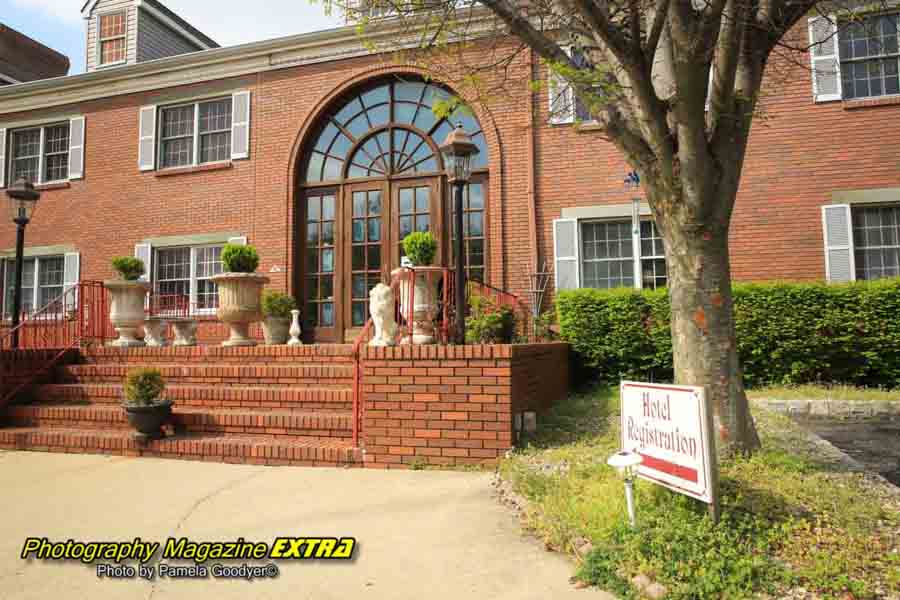Allaire State Park Photography
The park, located in Howell and Wall Township in Monmouth County, New Jersey, United States, near the Borough of Farmingdale, operated and maintained by the New Jersey Division of Parks and Forestry, is part of the New Jersey Coastal Heritage Trail Route. The park is known for its restored 19th-century ironworks, Allaire Village, on its premises. It is named after James P. Allaire, founder of the Howell Works at the same site.
The park also hosts the Pine Creek Railroad, a tourist railroad. Take a class at Allaire Village in Monmouth County with Extra Eyes Photo Tours – Beginner level I and II. This hot spot has some trains, 1800s barns, and buildings to explore and photograph. Some buildings have signs requesting that you not take pictures inside the premises.
Other than those days, some events go on here; it’s a pretty quiet park. The train station is an excellent spot for some dynamic images. People dressed in 1800s attire walk around the grounds. It has trains and maybe seven or so buildings. If your timing is right, you might even catch a wedding at the old church. Don’t mistake the location for the campground down the street.
Parking Fee: $5.00 a day, charged seasonally
Below is a rare glimpse at Pam Goodyer teaching a photography workshop at Allaire Village.
(Above—Rare photo of Pamela Goodyer. She used to run a class for her company on weekends. Those are her students. She has taught over 1,400 students on nights and weekends. See the New Jersey Photography Instructions page for current classes.)
HOW TO GET TO ALLAIRE VILLAGE:
WHEN TO VISIT ALLAIRE VILLAGE :
Any time is good, but we like fall foliage. The park also has events, so watch for them. Around Halloween, ghost hunting season is good since the village is haunted.
HOW LONG TO PHOTOGRAPH:
If you are looking for a quick visit to take in the views and snap some photos, then 1 hour should suffice. But if you want to do some hiking or plan on staying longer than that, you can stroll the park for about an hour or two. We suggest that you plan to spend about two hours photographing the park. There are many buildings and a train to photograph.
OTHER PHOTOGRAPHY AREAS NEARBY:
PHOTOGRAPHY GEAR LIST
- A sturdy tripod will be vital for getting milky water blur shots. There is one small spot with moving water here.
- A wide-angle lens will help you fit the majestic lighthouse and surrounding area into your frame.
- Bring a telephoto lens and monopod for wildlife photography to help stabilize your camera. There are a few birds here, but not many.
- Pack plenty of extra batteries and memory cards, as you’ll likely take many photos.
- Bring your macro lens to photograph the vast and intricate details of the surrounding nature.
- Pack an array of filters, from UV to polarized, to take the glare off the water and neutral density filters for long exposure to milky water effects.
- Bring a spare set of fully charged batteries and extra memory cards; you never know when a perfect shot will present itself, and the last thing you want is your camera battery.
WHAT ELSE TO BRING – A PACKING LIST
- Organic bug repellent. (Non-organic is very toxic)
- Organic Sun protection. (Non-organic sunscreen is a cancer cause.)
- Durable hiking boots for any trail or terrain you may encounter.
- Have a waterproof backpack or rain cover to protect your equipment.
- Packaging a rain jacket and long pants.
- A hat and sunglasses to shield yourself from the elements.
Announcing our PhotographyContest
All of the winners will have their photo featured in our Magazine Lots of Prizes
PHOTOGRAPHY BASICS
SHUTTER PRIORITY:
You have moving subjects, you will want to shoot in shutter priority to ensure your shutter speed is high enough to have your subject in sharp focus. Approximately 1/250th of a second is appropriate for people walking by, and adjust your ISO accordingly. If they are moving fast, increase your shutter speed to about 1/500th of a second. A fast bird flying by would be shot at about 1/1000th of a second. If it’s a bright sunny day, go as high as 1/1200th of a second. Remember, the higher your shutter speed, the less light comes into the camera. For More Details, see our Shutter Priority Page.
MANUAL MODE:
You can do your long-exposure running and milky water shots if you have moving waters at the location. You will have to use a tripod for this effect. Your settings will vary depending on the lighting and your neutral density filter. You will shoot in manual mode for the milky waters. ISO is always 100 or as low as your camera will allow. The aperture is f22, or the highest f-stop your camera will allow. Your shutter speed will be the only variable depending on the light. Roll your shutter speed until your meter reads zero. (In the center) Use your shutter release or 2-second timer to prevent camera movement when exposing. You will want at least a 2-second exposure for milky water. If you don’t have a neutral density filter, you may not get more than 1/15th of a second in the sun.
You can buy an ND filter here. We highly suggest you do not go anywhere without one. Long exposure to moving waters makes all the difference between lifeless images and outstanding, dynamic images.
APERTURE PRIORITY:
Aperture Priority is often used to blur the background of your images and control your depth of field (how much from the subject to the background is in focus). For more information on this – see our Aperture page
ISO:
The higher you set it, the more light is when exposing an image. The higher the number, the more digital noise, so stay below 800. If you need to go higher to get the shot, you can use Topaz Denoise to filter out the digital noise later. See the ISO page here.
WHITE BALANCE:
Be sure to set your white balance each time the lighting changes. Auto mode is not always accurate on many cameras, and we prefer to set it manually. It’s one of the more straightforward basics of photography to master. If you need more help, you can get some more details here. See the white balance page here.
WATERFALL PHOTOGRAPHY:
If you’re going to do the milky water photography shots here along the water, you must have a tripod and a neutral-density filter. Preparing before embarking on a waterfall photography excursion is always best. You can also explore long-exposure waterfall techniques by visiting our waterfall photography page for tips.
Check for Special Discounts on Instructions
Learn Photography from An International-Award-Winning Photographer
Photography Lessons, Tours & Workshops
Skype and Zoom Lessons
HOTEL INFORMATION
Colt’s Neck Inn – Click here to go to their website. When in this area this is the only place to stay. We love it here. It is pet-friendly too!
THE COLTS NECK INN
NJ 07722 USA
When you are traveling doing your photography and looking for a place to rest, visit the Colts Neck Inn Hotel. The location offers the tranquility of the country while being in close proximity to the Asbury Park and Long Branch Beaches, Delicious Orchards, Monmouth Race Track, Jersey Shore Premium Outlets, Eatontown, Freehold, and Red Bank. The two-story hotel features 47 individually decorated rooms with Thomasville™ furnishings. They also offer two grand suites, each with a Jacuzzi. Guests enjoy free Wi-Fi, cable TV, parking, and continental breakfast. The Colts Neck Inn Hotel offers the comfort and charm one expects in a country setting, with modern amenities.
FOOD & DINING
There is a food truck by the bathrooms in the park, right by the parking lot.
Outside of the Park:
Spring Meadow Inn
American Restaurant, Golf Course, and Bar
4185 Atlantic Ave, Wall Township, NJ 07727, United States
AREA INFORMATION
General Admission:
*NON-SPECIAL EVENT WEEKEND DAYS*
Weekends April through November
General Admission is $5.oo, ages 4 & up!
Under age 3 is free.
CAMPING
Allaire State Park Camping – Make reservations here
Campsites: 45 tent and trailer sites with fire rings and picnic tables. Flush toilets and shower facilities are within walking distance. Trailer sanitary station open April 15 to October 31. Open year-round. Fee: NJ Resident $20 per night; Non-Resident $25 per night.
Yurts: Four yurts, circular tents built on a wood frame, featuring wood floors, a deck, and a plexiglass skylight. Each yurt has a wooden door, window screens and flaps, and two double-deck bunks, which sleep up to four people. It is accessible to persons with disabilities. Fee: NJ Resident $35 per night; Non-Resident $40 per night.
Shelters: There are six shelters. They are cabin-like structures with a wood stove for heat and two double-deck bunks, which sleep up to four people. Each site includes a fire ring and picnic table. The shelters are accessible to persons with disabilities. They are open from February 1 to December 31. Fees: NJ Residents pay $48 per night, and non-residents pay $60 per night.
Allaire Village at Allaire State Park is a great photography location. Photography Hot Spots.















